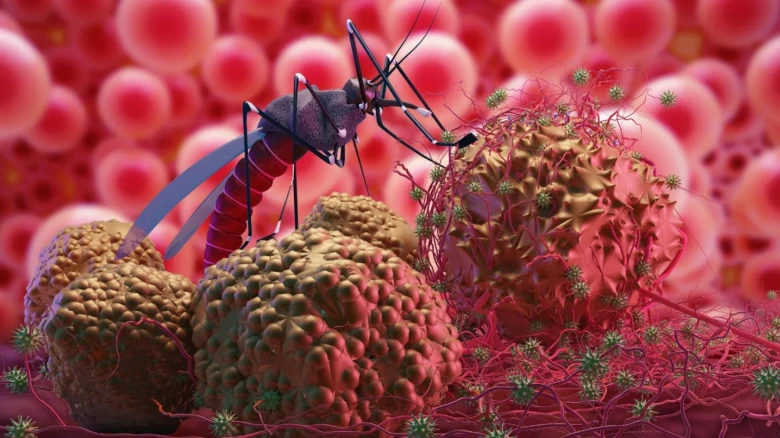Public health initiatives are also focusing on increasing awareness about the virus, its symptoms, and preventive measures...
Digital Desk: The World Health Organisation (WHO) recently reported that the current outbreak of the Chandipura virus in India is the largest seen in the last two decades. The alarming rise in cases and fatalities has drawn significant concern from both national and international health authorities.
According to the WHO, between early June and August 15, the Indian Ministry of Health reported 245 cases of Acute Encephalitis Syndrome (AES), including 82 deaths, reflecting a case fatality rate (CFR) of 33 percent. Notably, 64 of these cases have been confirmed as infections caused by the Chandipura virus (CHPV). AES is characterized by the rapid onset of fever, altered mental status, and seizures, which can result in high mortality rates if not promptly treated.
A total of 43 districts across India are currently reporting AES cases, making this outbreak widespread. CHPV has been known to cause sporadic cases and outbreaks of AES in the western, central, and southern parts of India, particularly during the monsoon season, when conditions favour the breeding of vectors like sandflies, mosquitoes, and ticks that transmit the virus.
The Chandipura virus belongs to the Rhabdoviridae family and is named after the town of Chandipura in Maharashtra, where it was first identified. Historically, the virus has caused periodic outbreaks in India, with notable increases in cases every four to five years, especially in Gujarat. The virus primarily affects children under the age of 15, presenting with acute onset of fever and symptoms affecting the central nervous system.
The case fatality rate for CHPV is alarmingly high, ranging between 56 to 75 percent. Unfortunately, there is no specific treatment or vaccine available for the virus. The WHO has emphasized that early access to medical care and intensive supportive treatment can improve survival rates, highlighting the importance of timely diagnosis and medical intervention.
Given the severity of the outbreak, the WHO has recommended enhancing surveillance efforts in high-risk areas to detect and manage cases promptly. This includes ensuring laboratory diagnostic capacities are in place for the timely collection, transport, and testing of serum and cerebrospinal fluid samples for serological and virological investigation.
The Indian government, in collaboration with WHO, has deployed a National Joint Outbreak Response Team (NJORT) to Gujarat, where the outbreak is most severe, to assist with public health measures and conduct a detailed epidemiological investigation. This team is actively involved in controlling the vector population through comprehensive insecticidal spraying and fumigation efforts to reduce the number of sandflies, mosquitoes, and ticks.
Preventive Measures and Public Awareness
Public health initiatives are also focusing on increasing awareness about the virus, its symptoms, and preventive measures. The WHO has recommended protection against bites from sandflies, mosquitoes, and ticks as a primary preventive measure. People are advised to use insect repellent, wear long-sleeved clothing, and avoid areas with heavy vector populations, especially during the monsoon season when the risk of transmission is highest.
Moreover, the Gujarat Biotechnology Research Centre (GBRC) is actively engaged in research to identify other viruses that may cause encephalitis, ensuring a comprehensive approach to understanding and mitigating the spread of AES in the region.
Although a declining trend in the number of new AES cases has been observed since July 19, health authorities remain vigilant. The monsoon season creates favourable conditions for vector populations, raising concerns about further transmission of CHPV in the coming weeks.
The WHO's alert about the Chandipura virus outbreak serves as a critical reminder of the need for sustained public health efforts, robust surveillance systems, and effective vector control measures. With no human-to-human transmission reported to date, the focus remains on vector control and early medical intervention to prevent further loss of life and contain the outbreak.

Leave A Comment